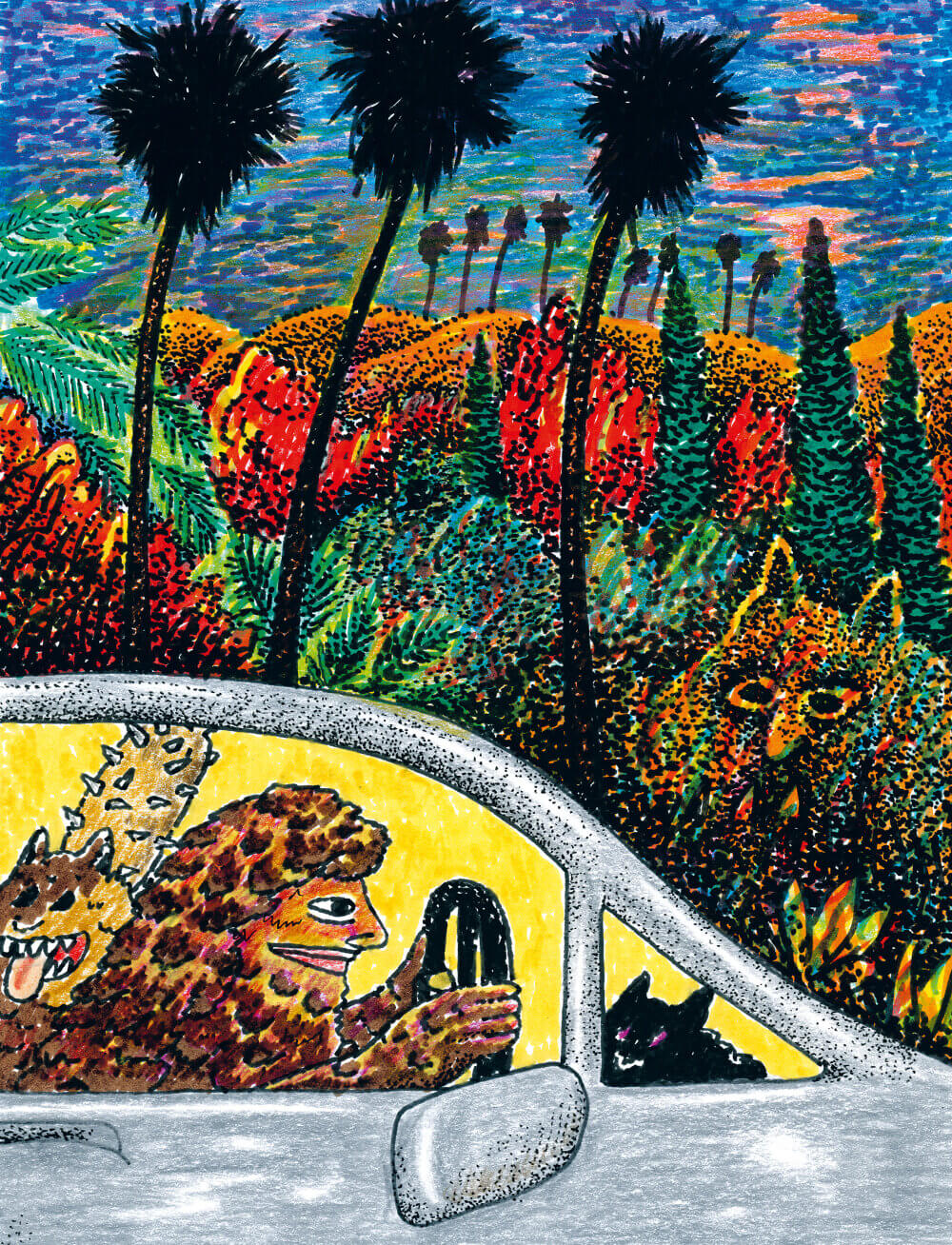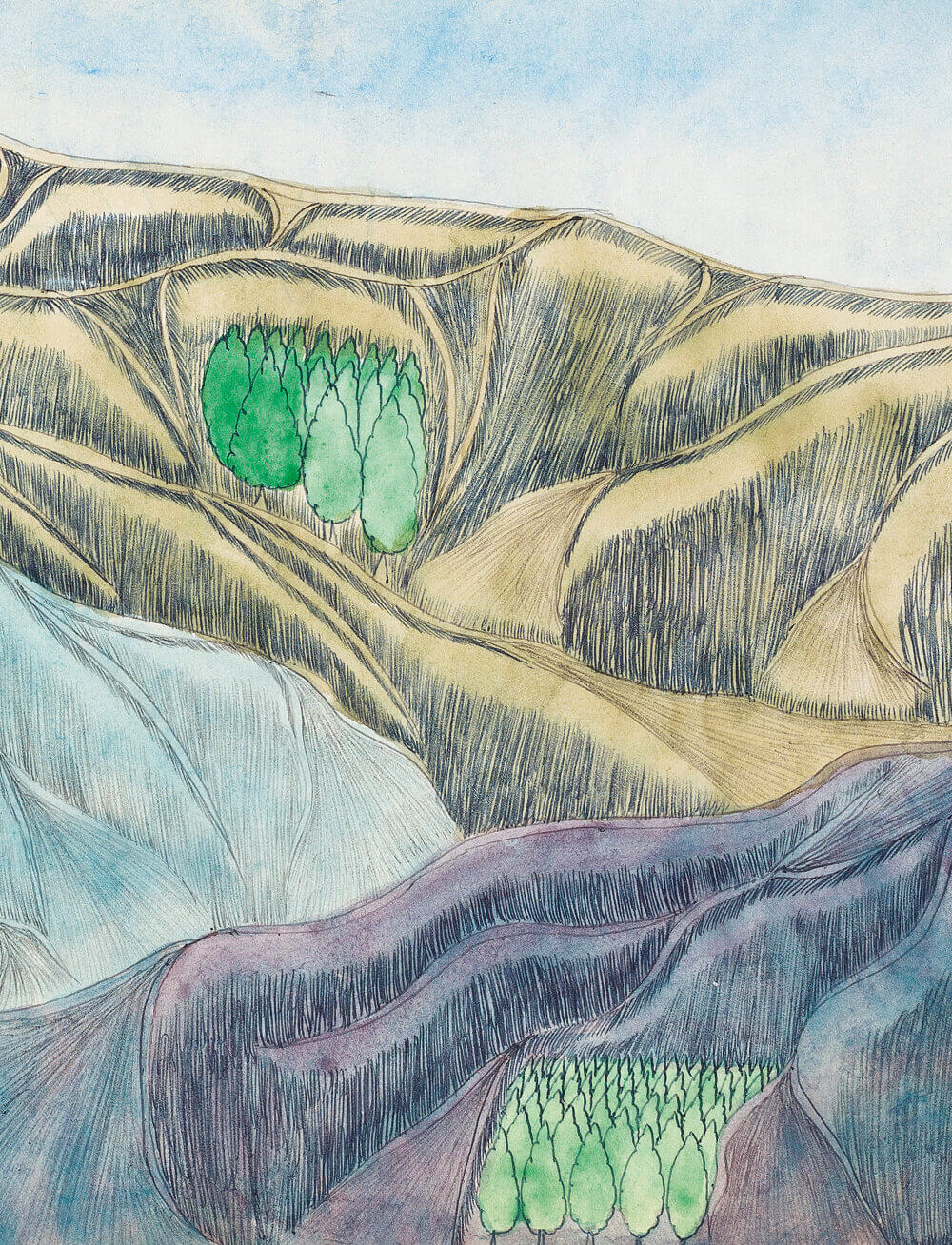
Plant-Based Monster Trucks
Plant-Based Monster Trucks is the latest drawing collaboration between Swiss illustrators and artists Lina Müller and Luca Schenardi. In September 2023, they spent a month in an early 1900s bungalow in Echo Park, Los Angeles—their first time visiting the city.
It felt like a Lynchian dream: wandering through paradise-like garden neighborhoods, hearing owls at night from bed, watching coyotes from the porch swing at dusk, sitting in cars rolling along in an endless stream of other cars. But mesmerizing scenes could shift abruptly into unsettling ones. The artists were drawn to the contrast between light and shadow – on multiple levels. A peaceful stroll down a quiet street lined with blooming flowers suddenly turns into a frantic escape from a bloodhound trying to tear through a fence to get to them. A sinister stairway leading down from the sunlit Sunset Boulevard awakens primal fears. A black hole in the last few meters of a dark sidewalk—just before reaching a legendary diner-turned-music-club – seems like it could swallow you whole. Plant-based pizzas kill your appetite. And monster trucks are real.





